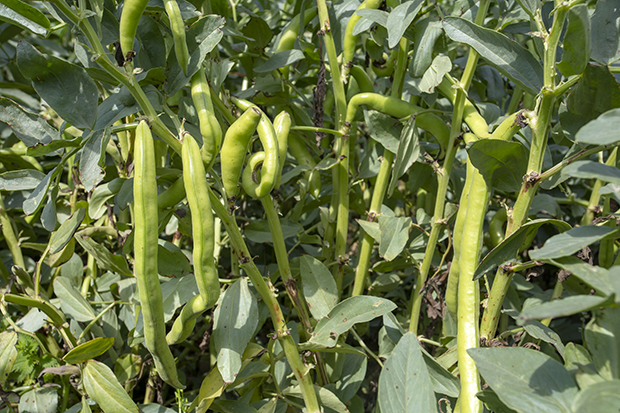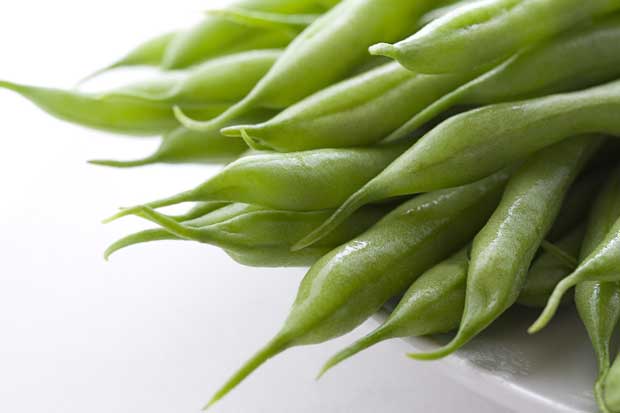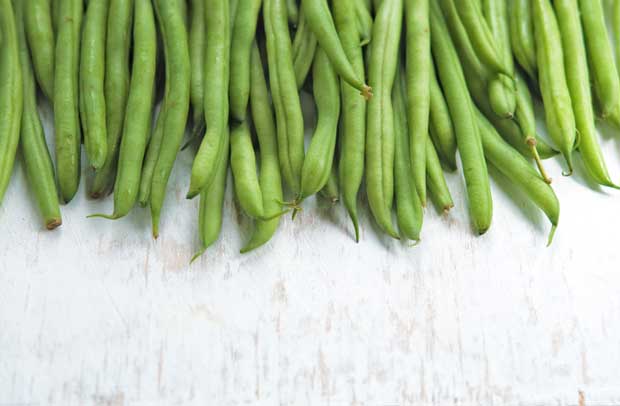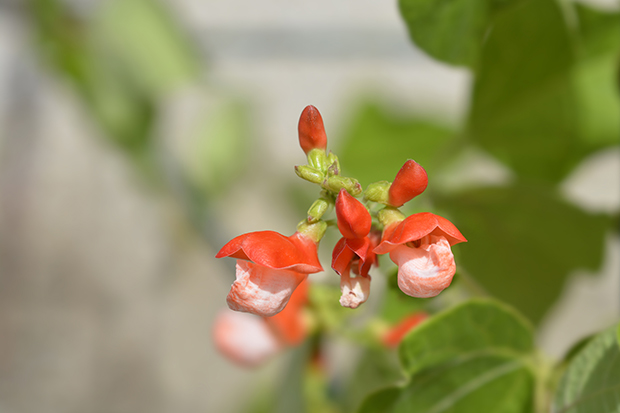Which bean varieties to plant for summer

A warm summer makes bean-growing a snap.
Unlike some vegetables that often need to be nursed, the bean is independent. There are varieties that can be planted in winter to fill the early spring “hungry gap”. There are long ones, purple ones, yellow ones, stringy and stringless, all providing good food, and as a bonus, the plant fixes nitrogen in your soil.
A BIT OF BEAN HISTORY
Beans are legumes, belonging to the Fabaceae family, and have been cultivated for thousands of years. The long pod-like beans are native to Europe, while snap beans are native to the Americas. Beans were mostly grown to be dried until growers finally bred tender, less-stringy beans in the early 1900s.
They still suffer from a bad reputation as being tough to eat and tasteless, when in fact it has a lot to do with when beans are picked and how they are cooked, usually over-cooked making them tough.
TYPES OF BEAN

There are a huge number of bean varieties that fall into several popular categories: broad beans, climbing/runner beans, butter beans and dwarf beans.
Broad beans
Very hardy and easy to care for, the broad bean can be planted as early (or as late) as autumn-late winter, with seeds germinating at low temperatures and young plants resisting light frost. This means you get a good supply of beans in early spring when most other vegetables are not producing.
The broad bean likes a light, slightly acidic soil but will grow in any fertile soil. They really like a soil that contains manure from the crop used beforehand (ie broccoli, cabbage etc).
To ensure good light on your crop, plant in rows from north to south (about 20cm between each plant, 50cm between each row). If you do choose to grow through winter, make sure the plants have plenty of protection from cold winter winds. In some areas a cloche may be needed.
Sprinkle a handful of lime to the square metre. Don’t use a nitrogen-rich fertiliser – beans will fix their own nitrogen. Mulch with compost.
Water well at flowering/pod-growth time and you can pinch out the top of the plant at the same time; this is supposed to encourage the plant to set its crop.
Dwarf beans
These can be grown in containers if you are confined in your garden space. Dwarf beans tend to prefer warmer conditions, so plant from November onwards for a great summer crop.
Out in the garden, plant in rows from north to south with each plant about 15cm apart in rows 40cm wide.
As for broad beans, keep well watered and mulch around the roots so keep them moist. Unlike broad beans, dwarf beans are not good fixers of nitrogen.
Harvest beans while still young for tenderness.
Climbing/runner beans
Climbing beans come in two types, the perennial runner beans and the annual climbing version of the French bean.
Runner beans prefer similar soil and weather conditions as the bean types above, although adding some well rotted manure or compost into the soil probably wouldn’t go astray.
Seed can be sown directly into soil in warm spring soil, to a depth of about 2cm, 10-20cm apart. Make sure you have sturdy climbing frames in place that go to about 2m high and put a seed on either side of a support – you can thin out the weaker plant later on.
If sowing directly into soil, look out for slugs.
Good companion plants: Cabbage, carrot, cauliflower

TIPS FOR GOOD BEANS
Avoid pest problems
To get good results from your bean seeds, Kay Baxter from Koanga Gardens recommends growing them in seed trays and transplanting them when they get their first leaves, to avoid problems with birds, slugs and snails. This also guarantees you a faster and more reliable germination rate. Plant out, after a week of hardening off, about three week after germination.
Watering
In dry weather, water from when flower buds appear, giving 5-11 litres per square metre, twice a week throughout the cropping period.
Bees and beans
Beans need bees for pollination, so by planting your beans in a sheltered spot you allow bees to gather pollen in peace. Growing sweet peas nearby will encourage more bees.
Too many beans?
You can freeze beans for use through winter. Boil in salty water until they dark green, place in airtight bags and freeze immediately.
5 VARIETIES TO TRY

This is a small selection of some of the more popular beans.
1. Scarlet runner. Perennial in warm climates, annual when cooler. One of the oldest varieties and a favourite for their great flavour and good production. Reliable climber, pick beans when younger to avoid stringiness or try a stringless variety (Stringless Scarlet).
2. Roquefort. French heirloom bean, yellow/gold beans with great flavour and high productivity.
3. Romano Pole. Italian bean with great flavour, stringless, pods flat and broad
4. Yard Long. If you let them, these oriental beans will grow to 100cm long but taste best at about 40cm long. Sweet flavour, stringless, plant will grow high so will need good support. Prefers hot summer and long growing season.
5. Purple teepee. These beans grown to be long and purple stringless, snap beans but turn green when cooked. Very productive plant according to Kings Seeds.
Beans in Citrus Butter
This recipe works well with all types of green beans. The lime zest really brings out the flavour of the beans and is delicious served with fish.
INGREDIENTS
300g beans, cut into 4cm pieces
25g butter
zest and juice of ½ a lime
1 tbsp chopped fresh parsley
salt and freshly ground black pepper
METHOD
Cook the beans in boiling, salted water for 3-4 minutes until just tender and drain. Melt the butter in a saucepan and add the lime zest and juice. Cook gently for 1-2 minutes. Add the parsley and beans and season to taste.
Summer Greens with Bacon and Feta
This stir-fry of pods and beans is so pretty and summery, and if you have mint in the garden, which is growing wild as a jungle – it’s a wonderful way to use some of it.
INGREDIENTS
100g fine French beans or sliced runner beans
200g mixed, podded peas and broad beans
150g lightly smoked bacon, chopped
4 tbsp vinaigrette dressing
100g baby plum tomatoes, halved
100g feta cheese, diced
Small handful fresh young mint leaves (You can replace the feta cheese and mint in the stir-fry with flaked tuna and fresh basil)
4 small eggs
METHOD
Put a large pan of water on to boil. Drop in a few of the mint leaves then add the French beans. Return to the boil and bubble for 2-3 minutes before adding the broad beans and peas. Return to the boil and bubble for a further 5 minutes.
Remove the vegetables with a slotted spoon and drain well in a colander. Return the water to the boil, drop in the four eggs and immediately take the pan off the heat and set aside.
Place a wok over a high heat. As soon as it’s very hot, add the bacon pieces and stir-fry for 2-3 minutes until they are golden and beginning to crisp. Remove to a plate with a slotted spoon. Add 2tbsp of vinaigrette to the fat in the pan, let it sizzle, then add all the vegetables with the tomatoes and mint. Stir-fry for 2 minutes then add the feta cheese and remaining vinaigrette dressing.
Serve with a poached egg on top.
Love this story? Subscribe now!
 This article first appeared in NZ Lifestyle Block Magazine.
This article first appeared in NZ Lifestyle Block Magazine.
